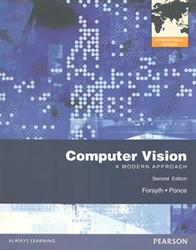Handbook of Digital Image Synthesis: Scientific Foundations of Rendering
暫譯: 數位影像合成手冊:渲染的科學基礎
Pegoraro, Vincent
- 出版商: A K Peters
- 出版日期: 2020-09-30
- 售價: $2,270
- 貴賓價: 9.5 折 $2,157
- 語言: 英文
- 頁數: 838
- 裝訂: Quality Paper - also called trade paper
- ISBN: 0367658194
- ISBN-13: 9780367658199
-
相關分類:
Computer Graphics
-
其他版本:
Handbook of Digital Image Synthesis: Scientific Foundations of Rendering
相關主題
商品描述
The Handbook of Digital Image Synthesis is the most up-to-date reference guide in the rapidly developing field of computer graphics. A wide range of topics, such as, applied mathematics, data structures, and optical perception and imaging help to provide a well-rounded view of the necessary formulas for computer rendering. In addition to this diverse approach, the presentation of the material is substantiated by numerous figures and computer-generated images. From basic principles to advanced theories, this book, provides the reader with a strong foundation of computer formulas and rendering through a step-by-step process.
.
Key Features:
- Provides unified coverage of the broad range of fundamental topics in rendering
- Gives in-depth treatment of the basic and advanced concepts in each topic
- Presents a step-by-step derivation of the theoretical results needed for implementation
- Illustrates the concepts with numerous figures and computer-generated images
- Illustrates the core algorithms using platform-independent pseudo-code
商品描述(中文翻譯)
《數位影像合成手冊》是計算機圖形學這一快速發展領域中最新的參考指南。涵蓋了廣泛的主題,如應用數學、數據結構以及光學感知和成像,幫助提供計算機渲染所需公式的全面視角。除了這種多樣化的方式,材料的呈現還通過大量的圖形和計算機生成的影像來加以證實。從基本原則到高級理論,本書通過逐步的過程,為讀者提供了堅實的計算機公式和渲染基礎。
主要特點:
- 提供對渲染中廣泛基本主題的統一覆蓋
- 對每個主題中的基本和高級概念進行深入探討
- 逐步推導實現所需的理論結果
- 通過大量圖形和計算機生成的影像來說明概念
- 使用平台無關的偽代碼來說明核心算法
作者簡介
Vincent Pegoraro is a scientific author whose research interests lie in physically-based rendering, on which he has published scholarly articles in the fields of both graphics and visualization. He completed his post-doctoral fellowship at Saarland University, with the Multimodal Computing and Interaction(M2CI) Cluster of Excellence and the Intel Visual Computing Institute VCI). Dr. Pegoraro earned a PhD degree in computer science from the University of Utah, where he carried out research at the Scientific Computing and Imaging (SCI) Institute, and interned within the R&D department of Lucasfilm - Industrial Light & Magic (ILM). Before his doctorate, he worked on virtual simulators as an engineer at the Center for Integration of Medicine & Innovative Technology (CIMIT) and as an intern at LIFL/INRIA.
作者簡介(中文翻譯)
文森特·佩戈拉羅是一位科學作者,他的研究興趣集中在基於物理的渲染技術上,並在圖形學和可視化領域發表了學術文章。他在薩爾蘭大學完成了博士後研究,隸屬於多模態計算與互動(M2CI)卓越集群以及英特爾視覺計算研究所(VCI)。佩戈拉羅博士在猶他大學獲得計算機科學博士學位,並在科學計算與成像(SCI)研究所進行研究,還曾在盧卡斯影業的研發部門(工業光魔,ILM)實習。在攻讀博士學位之前,他曾在醫學與創新技術整合中心(CIMIT)擔任虛擬模擬器工程師,並在LIFL/INRIA實習。












